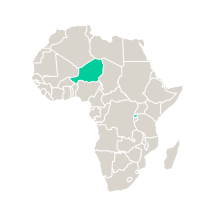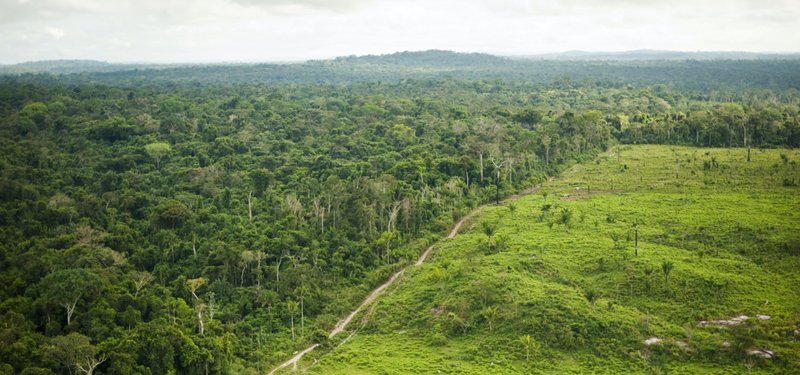
Agriculture
The number of people suffering from chronic hunger—estimated at well over 800 million before the COVID crisis—is poised to increase dramatically. Only urgent, coordinated action will prevent the pandemic from becoming a global humanitarian crisis. Adopting sustainable land-use systems and agricultural practices can help reduce this immediate threat, while also improving food security and generating significant economic benefits.
Headline Statistics
Agriculture accounts for almost 70% of total employment in low-income countries worldwide, which means that increasing yields and incomes will play a fundamental role in boosting rural livelihoods and ensuring country-wide economic development.
New sustainable agriculture opportunities could generate almost 80 million jobs by 2030, with more than 90% of them located in developing countries. That includes roughly 21 million jobs in Africa, 22 million jobs in India, 12 million jobs in China, and 15 million jobs in the rest of Asian developing countries.
Transforming food and land use systems could create new business opportunities worth up to $4.5 trillion a year by 2030.
Agricultural shifts and economic opportunities
- Agriculture is the world’s largest employer and plays a critical role in supporting the livelihoods of an estimated 1.3 billion people living in rural poverty. If the responses of governments, businesses, and farmers to significant climate risks and ecological scarcities are not well informed, then we run the risk of significant and potentially devastating upheavals in jobs and livelihoods for decades to come.[1]
- Agriculture accounts for almost 70% of total employment in low-income countries worldwide, which means that increasing yields and incomes will play a fundamental role in boosting rural livelihoods and ensuring country-wide economic development.[2]
- Yet, transforming food and land use systems could create new business opportunities worth up to $4.5 trillion a year by 2030.[3]
- FAO predicts that shifting towards more sustainable forms of agriculture and land use could add an additional 2.3 trillion in productive growth to the global economy, providing a strong opportunity for job creation with the generation of 200 million full-time jobs by 2050.[4]
- In 2017, OECD countries provided $228 billion in support to farmers, of which $116 billion (i.e. 51%) is considered most environmentally harmful in comparison to other types of support. While this percentage of overall support to farmers identified as potentially most environmentally harmful has declined considerably since 1990, it has remained relatively constant over the past decade.[5]
- Across developed and developing countries, government subsidies for agriculture and fisheries are currently running at over $700 billion a year with only around 15% targeted at public goods.[6] These public subsidies, in addition to being economically inefficient, often lead to negative outcomes for the climate and environment, such as increased deforestation due to agricultural expansion in rainforest areas.[7]
- The world’s 1.5 billion smallholder farmers have the highest incidence of poverty amongst all sectors of the global economy. Better technology in smallholder farming through aggregation, extension services, access to capital and other levers could increase yields and productivity, which would lower poverty rates.
- The Valuing the SDG Prize in Food and Agriculture report shows that the food and agriculture sectors sustainably could unlock 14 major business opportunities worth $2.3 trillion annually by 2030.[8]
- Each opportunity has an estimated value range: from cattle intensification where sustainable improvements could increase value by $15 billion a year and increase carbon sequestration by 148 million tons per year,[9] to reducing food waste in value chains worth $405 billion to the private sector.[10] Reducing food waste preserves the land and waters needed to produce that food and can reduce GHG emissions by 2.3 million tons per year.[11]
- With an annual investment of $320 billion, fully pursuing these sustainable opportunities would deliver a seven- fold return on investment.[12] These 14 opportunities could also generate almost 80 million jobs by 2030, which represents around 2% of the forecasted labour force.
- However, land grabs and involuntary removals have seen some communal lands acquired by agribusinesses without any notable local benefits or jobs being created.[13]
Silvopasture
- Globally, silvopasture is currently practised on 550 million hectares of land but could expand to 720-772 million hectares by 2050. Of the 823 million hectares theoretically suitable for silvopasture, carbon dioxide emissions can be reduced by 26.6-42.3 gigatons. Farmers could realize financial gains from revenue diversification of $1.7- 2.3 trillion, on investment of $206-273 billion and lifetime operational cost of $2-3 trillion to implement.[14]
Gender
- If women farmers had access to the same financial and technical resources as men, the resulting rise in output could rescue an estimated 150 million people from hunger.[15] There are important efforts underway to increase women’s access to knowledge, technology, and resources in the food and land use sector.[16]
Public health
- For public health, shifting diets from those heavy in animal-based and processed foods—and especially away from beef—towards more plant-based diets could result in global public health benefits, health-related cost savings of almost $1 trillion per year by 2050,[17] as well as significant positive environmental impacts.
Food loss and waste
- Reducing food loss and waste is a major economic prize, as well as a moral obligation. Saving just one-quarter of the food currently lost or wasted would be equivalent to the amount of food needed to feed 870 million people annually.[18]
- Laboratory-based alternative protein technologies may be potentially the most disruptive. The insect protein market is also becoming established and has now reached an estimated worth of almost $1 billion.

Asia
India
On the Indo-Gangetic Plains, wheat farmers using zero- and minimum tillage have reaped the benefits of higher grain yields and enhanced conservation of soil and water. Zero-tillage is considered the most successful resource-conserving technology on the plains. As well as increasing average yields by 7%, it has saved farmers 21 to 30 days of labour and $52 in land preparation costs per hectare and increased their average net incomes by $97 per hectare.[19]

Europe
For agriculture, 1.3 million of the 9.6 million farming jobs in the EU are linked directly or indirectly to Natura 2000.[20]

North America
United States
In 2018, 22 million full- and part-time jobs were related to the agricultural and food sectors—11% of total US employment. Agriculture, food, and related industries contributed $1 trillion to US GDP in 2017; the output of America’s farms contributed $132.8 billion of this sum—about 1% of GDP.[21]
The Nature Conservancy, in its report, “reThink Soil,” estimates that for each one percent of cropland in the U.S. that adopt an adaptive soil health system, annual economic benefits translate into $226 million of societal value through increased water capacity, reduced erosion and nutrient loss to the environment, and reduced GHG emissions, as well as $37 million of on-farm value through greater productivity. In the most optimistic case, it estimates soil health solutions could address up to $50 billion in social and environmental impacts annually across the U.S.[22]

Africa
Rwanda
Africa Improved Foods (AIF) produces locally nutritious food products (mineral and vitamin-rich porridge, for example) for local populations, especially pregnant and lactating mothers and stunted children, from locally sourced crops. By improving access to nutritious food, AIF is trying to address stunting and malnutrition, particularly in Rwanda, where almost 40% of children under five suffer from stunted growth, which costs Rwanda 11.5% of GDP.[23] Further along the value chain, the company’s factory generates jobs, increases demand for regionally sourced packaging, equipment and services, and increases the value of Rwanda’s exports. According to Chicago University, AIF will contribute approximately $750 million to the economic development of Rwanda.[24]
Niger
In Niger, farmer-managed natural regeneration efforts generate $280 million per year in ecosystem benefits, 4 million tons of emission reductions,[25] and yield increases, which provide food for 2.5 million people.[26]

Latin America and the Caribbean
Colombia
Colombia has demonstrated that combining grazing and agriculture with tree cultivation can coax more food from each acre, boost farmers’ incomes, restore degraded landscapes, and make farmland more resilient to climate change. The plan seeks to reduce pastureland from 38 million hectares (94 million acres) to 28 million hectares (70 million acres), while increasing cattle numbers from 23 million head to 40 million at a cost of between $1,000 and $2,000 per hectare, depending on the mixture of trees and shrubs. Farmers usually achieve a 100% return on investment within two years due to increases in milk production and weight gain in their cattle.[27]
Approximately one-third of all food intended for human consumption in Colombia is lost or wasted between the farm and the fork each year. This equates to nearly $5.4 billion in economic losses, at a time when more than half of Colombian households do not have enough food to live a healthy and active life. At the same time, rates of malnutrition and obesity cost the state at least $1.5 billion per year in lost economic activity.[28]
Resources
[1] Müller et al, Towards a Global Study on the Economics of Eco-Agri-Food Systems (2015)
[2] The Global Commission on the Economy and Climate, Unlocking the Inclusive Growth of the 21st Century (2018)
[3] Business and Sustainable Development Commission, Valuing the SDG Prize in Food and Agriculture (2016)
[4] FAO, Decent rural employment (2020)
[5] OECD, A Comprehensive Overview of Global Biodiversity Finance (2020)
[6] OECD, Agricultural Policy Monitoring and Evaluation 2018 (2018)
[7] OECD, Agricultural Policy Monitoring and Evaluation 2017 (2017)
[8] Business and Sustainable Development Coalition, Valuing the SDG Prize in Food and Agriculture (2016)
[9] Griscom et al, Natural climate solutions (2017)
[10] Business and Sustainable Development Coalition, Valuing the SDG Prize in Food and Agriculture (2016)
[11] WWF, Fight climate change by preventing food waste
[12] Business and Sustainable Development Coalition, Valuing the SDG Prize in Food and Agriculture (2016)
[13] FOLU, Growing Better Global Report (2019)
[14] Project Draw Down, Silvopasture (2020)
[15] FAO, Women in Agriculture (2012)
[16] UN Women, Climate-smart agriculture paving the way for women’s empowerment in Mali and Malawi (2016)
[17] Springmann et al, Analysis and valuation of the health and climate change cobenefits of dietary change (2016). It is estimated that health-related cost savings of moving to the diets based on dietary guidelines from that assumed in a reference scenario will be $482—987 billion per year in 2050.
[18] FAO, Food Loss and Waste Reduction
[19] FAO, Save and Grow in Practice (2016)
[20] European Commission, EU Biodiversity Strategy for 2030
[21] US Dept of Agriculture Economic Research Service, Ag and Food Sectors and the Economy (2020)
[22] The Nature Conservancy, reThink Soil (2016)
[23] World Food Program, The Cost of Hunger in Rwanda (2013)
[24] FOLU, Growing Better Global Report (2019)
[25] Griscom et al, Natural climate solutions (2017)
[26] The Global Commission on the Economy and Climate, Unlocking the Inclusive Growth of the 21st Century (2018)
[27] Yale Environment 360, In the Pastures of Colombia, Cows, Crops and Timber Coexist (2014)
[28] FOLU, Growing Better Global Report (2019)








